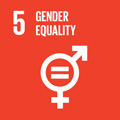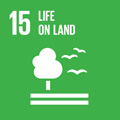- Docente: Paolo Zambonelli
- Credits: 3
- SSD: AGR/19
- Language: Italian
- Teaching Mode: Traditional lectures
- Campus: Bologna
- Corso: First cycle degree programme (L) in Land and Agro-Forestry Technologies (cod. 5831)
-
from Sep 16, 2024 to Dec 12, 2024
Learning outcomes
The course give the basic scientific and technical knowledge about wildlife animal management (only terrestrial), including the rearing techniques.
Course contents
The student that aim to attend this course should have already acquired a good compression in the basic biology, genetic and rearing of farm animals. The course is divided in 6 units :
1) National and Regional regulations to manage the wildlife animals
2) Resettlement of wildlife animal
3) Ungulates in Italy, description of morphology, physiology and behaviour and rearing techniques.
4) Hints on birdlife and their rearing techniques. Identification of wild animals.
5) Defensive strategies for the agricultural productions agains the wildlife animals damage. Urban animals.
The course includes seminars carried out by the professionals from the wildlife animal management.
Readings/Bibliography
PowerPoint presentation.
Regione Emilia Romagna website (http://agricoltura.regione.emilia-romagna.it/caccia).
Book: "Linee guida per l'allevamento di cervidi a scopo alimentare" (M. Lenzi).Teaching methods
The course is divided in two teaching units:
1) Theory: 18 hours of frontal lectures supported by videos, photos and slides.
2) Practice: 12 hours of seminaries.
Assessment methods
The course is a part of the integrate course of "Control of Wildlife and Economic Management of Protected Natural Areas” that is divided in two parts: "Control of Wildlife” and "Economic Management of Protected Natural Areas”.
An interviews is planned at the end of the course. Two questions will be posed. The student successfully pass the interview with an average evaluation of at least 18/30
The evaluation will be assigned according to the following criteria:
- A very thorough knowledge of the topics addressed in the course, together with strong skills of critical analysis, and a full management of the specific terminology will be evaluated with the maximum score (30-30L).
- An in-depth knowledge of the topics addressed in the course, together with a good analytical and critical ability and the proper use of specific terminology will be evaluated with good marks (27-29).
- A technically adequate preparation and a sufficient analytical capacity, even if not particularly articulated, expressed in correct terminology, will produce discrete evaluations (23-26).
- Sufficient preparation and capacity for analysis, expressed in a language that is barely formally correct, will determine the sufficiency (18-22).
Access to the exam is free. The test lasts about 20 minutes. The date, time and location of the test is published on the courses web site. To register for the exam, the student must be used the AlmaEsami web application.
Teaching tools
Slide.
Refernce regulation.
Text and website suggested.
The slide uploaded on virtuale.unibo.it platform.
Office hours
See the website of Paolo Zambonelli
SDGs



This teaching activity contributes to the achievement of the Sustainable Development Goals of the UN 2030 Agenda.
